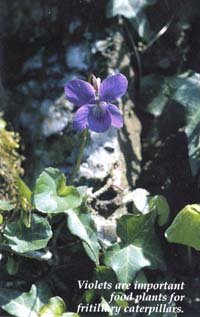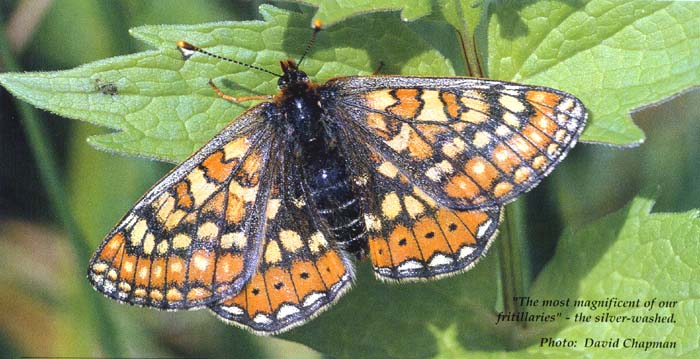The two smallest fritillaries are the pearl-bordered and the small pearl-bordered. While difficult to tell apart, the pearl-bordered flies much the earliest, sometimes being on the wing in the warmer days of the second half of April. Once more widespread, it is now restricted to the east of the county where it is present at only a few places. Undoubtedly, the prime site is the Wellcombe and Marsland Nature Reserve to the north of Bude.
The small pearl-bordered is on the wing in June and, though it may be found in woodlands like the Cabilla reserve, it is often found in more open landscape with some wetlands such as the wet dune systems at Loggan's Moor and the old tin-streaming wet grasslands at Breney. It is also here at this time that the marsh fritillary is most likely to be found. This butterfly is under threat over much of its range, which is why Breney Common has been submitted as a Special Area of Conservation - a site of international importance. Even here, the numbers are relatively small. Once widespread across much of the county, this butterfly is now restricted to the Mid-Cornwall Moors and a few of the Culm grasslands: the reserve at Greenamoor near Week St Mary is another place where marsh fritillaries still occur.
It is in the same month that the heath fritillary is in flight. In the east, on slopes overlooking the River Tamar, at the Luckett reserve to the north of Gunnislake, is one of only two sites in Cornwall for this very rare species
As summer moves on into July the larger species emerge. At the dune systems of Upton Towans and Loggan's Moor, near Hayle, dark green fritillaries can be seen. These are about half as big again as the ones that come out earlier in the season and are quite unmistakable, being strikingly large and having a powerful flight.
Meanwhile, in the woodlands, the largest fritillary of them all flies throughout the height of summer. A visit to somewhere like Cabilla reserve in the Fowey Valley in July (see page 29) is the best way to find the silver-washed fritillary, so called because of the silver streaks on the underside of the wings. Generally considered the most magnificent of our fritillaries, it flies with apparently effortless grace through the open glades and clearings, stopping to feed on bramble flowers. And in the north of the county, a't Wellcombe and Marsland, with luck, it is possible to see what is probably the rarest fritillary of all

in the county, the high-brown. Always scarce, it appears that the only place that it can now be found in the county is here.
Paul McCartney
Remember to send your butterfly records to ERCCIS, based at the Trust.Every record counts in our efforts to build up the knowledge base on which conservation depends.
